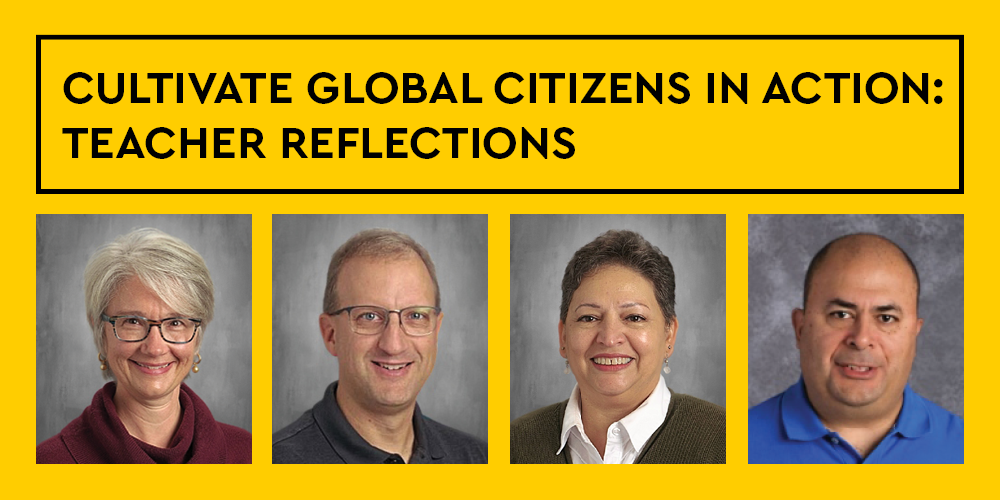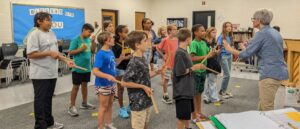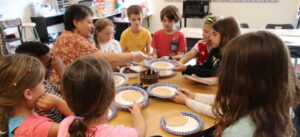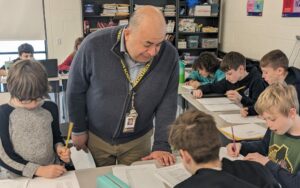Posted

Lancaster Mennonite is a Christ-centered Anabaptist school that is dedicated to teaching and helping students to grow in their relationship with Jesus Christ. As a school, we recognize the need to prepare students for a globalized world where interconnectedness and cross-cultural perspectives play significant roles. Students are invited to consider how they will choose to engage and impact the world around them through stewardship and service. Global citizenship involves introducing students to different cultures, languages, perspectives and ideas, as well as fostering intercultural understanding and empathy. Every day our teachers are authentically integrating our school’s Core Values into their courses and interactions with our students. Here are a few examples of how our teachers see the Core Value of Cultivate Global Citizens exhibited in their classroom, our school, and among our students.
This year fifth and sixth grade middle school students are taking a musical tour around the world! In my general music class we explored the music of each continent through singing, playing instruments, dancing, improvising, drawing, and student-led presentations. In addition, through examining music traditions and heritage, students learned the geography and a bit of the culture and history of the continents and countries we were talking about.
Here are some examples:
- In the Africa unit students learned about the importance of rhythm and practiced syncopated rhythms with sticks and djembe drums. They also learned about the kora, a West African traditional string instrument that is quite complicated to play.
- The Asia unit focused on learning the difference between tonalities – major, minor and pentatonic. From Japan, they sang the Sakura song about spring and cherry blossoms and made connections with a song from the Hymnal: A Worship Book (# 52) that uses the same tune. They learned the Frog Song (Kaeru no Uta) from Japan, a traditional kids’ song, on Orff instruments (xylophones) and eventually played in a round. In addition, students learned about the Chinese dulcimer instrument yangqin, danced “Sasha” a folk dance from Russia, which includes counting to three in Russian, and learned songs and instruments from Indonesia and India.

When studying each continent, songs were selected from a variety of folk-song resources along with the newest Mennonite hymnal, Voices Together as well as Hymnal: A Worship Book. The goals have been to build musical awareness and experience, to bring attention to the global church and its diverse offering of songs, and to nurture curiosity and creativity. As students are exploring music all around the world we are cultivating global citizens through the music curriculum.
Mutual Learning
Within the English curriculum, I’ve looked to expand high school students’ literature beyond the Western classics. Seeing a culture through the lens of its literary works helps students to better understand it, expanding on what the students learn in their Global Studies and World History classes. World Languages courses then naturally broaden students’ worlds. Both Spanish and German, offered here at LM, provide students the opportunity to learn another language and to travel to a country where that language is spoken. German classes have the opportunity to participate in our exchange with Kreisgymnasium in Bad Krozingen, Germany. This exchange has existed for 24 years and happened 11 times! The 12th exchange is being planned for this year.
My English as a Second Language (ESL) classes also create natural paths for students to engage with people from around the globe, like Asia, Africa, Europe, and South America. It’s been a tremendous joy to learn from and work with these students.
Experience Culture

so it was fun to share with them about my home country. I showed them where Honduras is on the map, what the flag looks like and what the symbols on it mean, and taught them about the history and culture.
The best part was when they got to try baleadas, which are a traditional Honduran food made with warm flour tortillas, butter, black beans, and cheese. I made them in class and students got to try them if they wanted!
I regularly integrate experiential learning into class for my students so they can learn about and develop appreciation for the countries that speak Spanish as part of the Spanish Immersion program. We invite other guests into the classroom often to provide this type of interactive learning.





